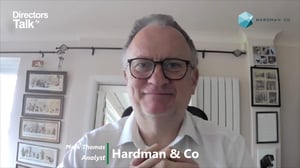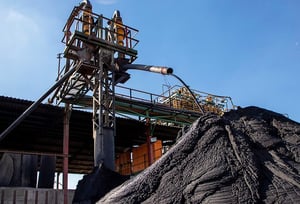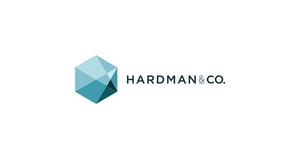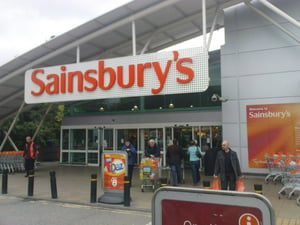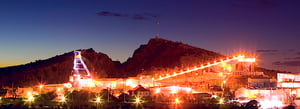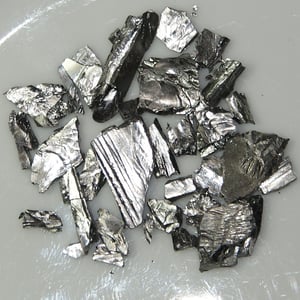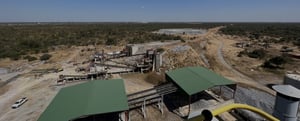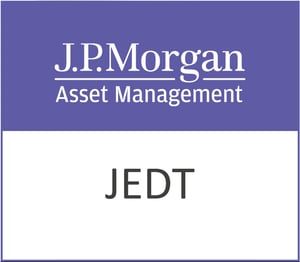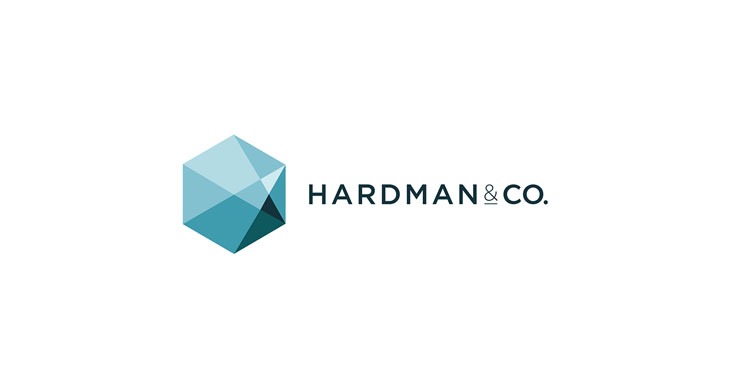City of London Investment Trust PLC (LON:CTY) has announced its Unaudited Results for the Half-Year Ended 31 December 2024.
INVESTMENT OBJECTIVE
The Company’s objective is to provide long-term growth in income and capital, principally by investment in equities listed on the London Stock Exchange. The Board fully recognises the importance of dividend income to shareholders.
PERFORMANCE
| As at 31 December 2024 | As at 30 June 2024 | |
| Net asset value (“NAV”) per ordinary share | 425.1p | 424.3p |
| Premium/(discount) | 1.4% | (1.0)% |
| Net asset value per ordinary share (debt at fair value) | 430.8p | 429.6p |
| Premium/(discount) (debt at fair value) | 0.0% | (2.2)% |
| Ordinary share price | 431.0p | 420.0p |
| Gearing (debt at par value) | 7.6% | 7.1% |
| Six months to 31 December 2024 | Six months to 31 December 2023 | |
| Dividends per share | 10.5p | 10.1p |
| Dividend yields | As at 31 December 2024 | As at 30 June 2024 | |||
| The City of London Investment Trust plc | 4.9% | 4.9% | |||
| FTSE All-Share Index (Benchmark) | 3.8% | 3.7% | |||
| AIC UK Equity Income sector | 4.8% | 4.2% | |||
| IA UK Equity Income OEIC sector | 4.2% | 4.3% | |||
| Sources: Morningstar Direct, LSEG Datastream | |||||
| Total return performance to 31 December 2024 | 6 months % | 1 year % | 3 years % | 5 years % | 10 years % |
| NAV1 | 2.8 | 11.5 | 24.8 | 29.2 | 83.8 |
| Share price2 | 5.1 | 10.6 | 26.8 | 25.1 | 80.1 |
| FTSE All-Share Index (Benchmark) | 1.9 | 9.5 | 18.5 | 26.5 | 81.9 |
| AIC UK Equity Income sector3 | 2.7 | 10.1 | 16.6 | 26.9 | 88.2 |
| IA UK Equity Income OEIC sector4 | 1.4 | 8.7 | 13.8 | 20.0 | 66.2 |
Sources: Morningstar Direct, Janus Henderson, LSEG Datastream
1 Net asset value per ordinary share total return with debt at fair value (including dividends reinvested)
2 Share price total return using mid-market closing price
3 AIC UK Equity Income sector size weighted average NAV total return (shareholders’ funds)
4 The Investment Association (“IA”) peer group average is based on mid-day NAV whereas the returns of the investment trust are calculated using close of business NAV
INTERIM MANAGEMENT REPORT
CHAIRMAN’S STATEMENT
Introduction
City of London Investment Trust achieved a 2.8% net asset value total return during the six months to 31 December 2024 against a backdrop of political change in the UK and USA, uncertain economic prospects globally and cuts in interest rates.
The Markets
Following July’s general election, the new Labour government introduced a Budget in October which raised public spending, increased the employer’s national insurance tax rate and signalled the removal of the Inheritance Tax exemption for personal pension funds. Growth in the UK economy slowed from the pace of the first half of the year, whilst the Bank of England lowered the base rate to 4.75% through two cuts of 25 basis points. The UK 10-year gilt yield rose from 4.2% to 4.6% during the six months, reflecting concerns about the stickiness of inflation and the prudent sustainability of government finances. Growth in Europe was also weak, with the European Central Bank reducing its deposit rate to 3.0%. Economic growth in the US, in contrast, remained relatively robust, with the US Federal Reserve making three cuts in interest rates to 4.5%.
The UK equity market returned 1.9%, as measured by the FTSE All-Share Index, with medium-sized and small companies slightly outperforming larger peers. The banking sector was a notable outperformer, with banks benefitting through rolling over structural hedges of funds on better terms than had prevailed during the period of ultra-low interest rates. The oil sector, however, was weak with the Brent oil price falling by 7% to $75 per barrel during the six months, reflecting reduced global demand.
Net Asset Value Total Return
City of London’s net asset value total return was 2.8%, exceeding the FTSE All-Share Index (1.9%), the AIC UK Equity Income sector average (2.7%) and the IA UK Equity Income OEIC sector average (1.4%). Stock and sector selection contributed to relative outperformance against the Index by 93 basis points. The biggest sector contributor was tobacco, where corporate earnings and dividends were resilient. Imperial Brands was the second biggest stock contributor. The biggest stock contributor was our underweight position in AstraZeneca. The third biggest contributor was NatWest, whose share price rose by 29% during the six months. The biggest detracting sector was aerospace and defence, where Rolls Royce, which we do not hold, continued to perform well despite not paying a dividend, and was our biggest stock detractor. In addition, our holding in BAE Systems gave back some gains, having been a very strong performer over the previous three years.
Earnings and Dividends
Earnings per share declined from 8.8p to 8.4p, compared with the same six-month period last year, mainly due to the change in timing of dividend payments from some investee companies. Another factor was the absence of any special dividends compared with £0.9 million received during the same period last year. This reflected an increasing trend by UK listed companies to substitute dividend distributions with share buy backs to fund shareholder returns, particularly in relation to exceptional profits.
The Board continues to control expenses tightly. City of London’s ongoing charge, which represents the investment management fee and other administrative non-interest expenses as a percentage of shareholder funds, is expected to remain around 0.37% during this financial year. This is low compared with almost all other investment trusts and (non-tracker) managed equity investment products.
City of London has declared two interim dividends to date of 5.25p each in respect of this financial year. The Company’s diverse portfolio, strong cash flow and revenue reserve give the Board confidence that in line with its objective to provide long-term income and capital growth, it will be able to increase the total annual dividend for the 59th consecutive year. The quarterly dividend rate will be reviewed by the Board before the third interim dividend is declared in April 2025.
Material Events and Transactions during the Period
The Board continued with its stated policy, subject to prevailing conditions, of issuing and buying back shares within a narrow band relative to net asset value. During the six-month period, the Company’s shares traded close to net asset value and ended the period with the share price equal to net asset value (valuing debt at fair value) and at a 1.4% premium to net asset value (valuing debt at par value). 28,278 shares were bought back, costing £119,000, at a small discount and no shares were issued.
A new holding was bought in TP ICAP, a leading intermediary in global financial markets. Notable additions were made to Shell, the oil and gas company, and to the diversified Real Estate Investment Trusts, British Land and Land Securities. DS Smith, the paper and packaging company in the process of being taken over by the US company, International Paper, was sold. Pennon, the water utility, was sold ahead of the final determination of the regulatory review of UK water companies. In a tough backdrop for consumer spending, Burberry and DFS Furniture omitted their dividends and were sold. A significant profit was realised with the sale of half the holding in 3i following a very strong share price performance. Some profits were also taken in BAE Systems.
Outlook for the Six Months to 30 June 2025
The UK economy is struggling to grow, with business confidence adversely affected by a combination of the rise in employer’s national insurance, the prospect of tighter labour regulations and the well-above inflation increase in the National Minimum Wage from April 2025. Although it seems likely that there will be further interest rate cuts from the current level of 4.5%, the Bank of England’s decision is made harder by the ripple effect of government induced cost pressures on inflation. Cuts in interest rates could be well received by investors, who will anticipate an improvement in corporate profits and consumer spending. The outlook for growth in Europe is also weak, with considerable political uncertainty in both France and Germany. The European Central Bank is expected to make further cuts in interest rates which may improve sentiment. Prospects for economic growth are stronger in the US, with its technology sector continuing to generate impressive returns. The policies of the Trump administration, such as in relation to tariffs, currently remain uncertain and the judgement of the potential impact of such policies will feature materially in the Federal Reserve’s determination of future interest rates.
Many domestic UK stocks remain on relatively depressed valuations, both absolutely and relatively when compared with their peers in overseas markets. The diversified Real Estate Investment Trusts exemplify this valuation discrepancy, trading on discounts to net asset value of 30% and dividend yields of 6%. It is important to recognise, however, that City of London’s portfolio is biased towards companies with overseas sales. At 31 December 2024, some 63% of the underlying sales of investee companies were made overseas. They are therefore well placed to benefit from global growth trends. It is also worth noting the possible signs of a lessening of geo-political tensions, such as the ceasefire in Gaza, and President Trump’s proactive engagement in efforts to end the war in Ukraine.
Given the relative attraction of UK equities to their equivalents in overseas markets, especially with regard to dividend yield, it remains the case that investors in UK equities “are paid to hold on”. It is encouraging to see many companies taking advantage of their low valuations to buy back their shares “on the cheap”. Imperial Brands, City of London’s seventh largest holding, has demonstrated the benefits of this approach with its share buy backs over the last two years having been significantly accretive to earnings per share.
More takeovers can be expected from overseas companies and private equity firms while this low relative value of UK equities persists. The dividend yield of UK equities will also become increasingly attractive relative to bank deposit rates as interest rates decline.
Sir Laurie Magnus CBE
Chairman
20 February 2025
FORTY LARGEST INVESTMENTS
| Company | Market value31 December2024£’000 | Company | Market value31 December2024£’000 | |
| HSBC | 105,230 | Aviva | 40,777 | |
| Shell | 97,802 | GSK | 40,380 | |
| RELX | 92,175 | IG | 39,620 | |
| Unilever | 85,256 | 3i | 35,640 | |
| British American Tobacco | 76,293 | British Land | 30,797 | |
| BAE Systems | 73,759 | Munich Re | 28,985 | |
| Imperial Brands | 73,399 | Severn Trent | 28,842 | |
| Tesco | 72,923 | Reckitt Benckiser | 26,576 | |
| NatWest | 71,373 | SSE | 26,466 | |
| AstraZeneca | 64,354 | TotalEnergies | 26,465 | |
| National Grid | 53,701 | Schroders | 23,872 | |
| Barclays | 52,021 | Sage | 21,760 | |
| Lloyds Banking | 51,493 | Swire Pacific | 21,725 | |
| Rio Tinto | 51,481 | Glencore | 21,204 | |
| M&G | 51,389 | Beazley | 20,413 | |
| Diageo | 49,725 | Anglo American | 20,094 | |
| BP | 49,512 | Deutsche Telekom | 19,651 | |
| Phoenix | 44,028 | Britvic | 19,620 | |
| Legal & General | 43,662 | St. James’s Place | 19,519 | |
| Land Securities | 40,880 | Novartis | 18,752 | |
| These investments total £1,831,614,000 or 81.0% of the portfolio. | ||||
| Convertibles and all classes of equity in any one company are treated as one investment. | ||||
SECTOR EXPOSURE
As a percentage of the investment portfolio excluding cash
| % | |
| Financials | 32.3 |
| Consumer Staples | 20.2 |
| Industrials | 9.8 |
| Energy | 8.1 |
| Health Care | 7.3 |
| Consumer Discretionary | 6.3 |
| Utilities | 5.3 |
| Basic Materials | 4.7 |
| Telecommunications | 2.6 |
| Real Estate | 2.4 |
| Technology | 1.0 |
| Total | 100.0 |
Source: Janus Henderson
SECTOR BREAKDOWN OF INVESTMENTS
| Valuation31 December2024£’000 | Valuation31 December2024£’000 | ||||
| ENERGY | Industrial Support Services | ||||
| Oil, Gas and Coal | PayPoint | 15,600 | |||
| BP | 97,802 | Hays | 10,285 | ||
| Shell | 49,512 | Inchcape | 9,619 | ||
| TotalEnergies1 | 26,465 | 35,504 | |||
| ENI1 | 9,673 | Total Industrials | 222,419 | ||
| 183,452 | |||||
| Total Energy | 183,452 | CONSUMER STAPLES | |||
| Beverages | |||||
| BASIC MATERIALS | Diageo | 49,725 | |||
| Chemicals | Britvic | 19,620 | |||
| Victrex | 8,308 | Coca-Cola1 | 10,940 | ||
| Johnson Matthey | 6,014 | 80,285 | |||
| 14,322 | |||||
| Food Producers | |||||
| Industrial Metals and Mining | Nestlé1 | 17,803 | |||
| Rio Tinto | 51,481 | Hilton Food | 9,050 | ||
| Glencore | 21,204 | Tate & Lyle | 8,638 | ||
| Anglo American | 20,094 | 35,491 | |||
| 92,779 | |||||
| Total Basic Materials | 107,101 | Personal Care, Drug and Grocery Stores | |||
| Unilever | 85,256 | ||||
| INDUSTRIALS | Tesco | 72,923 | |||
| Aerospace and Defence | Reckitt Benckiser | 26,576 | |||
| BAE Systems | 73,759 | 184,755 | |||
| 73,759 | |||||
| Automobiles and Parts | |||||
| Construction and Materials | Dowlais | 6,740 | |||
| Ibstock | 14,432 | 6,740 | |||
| Marshalls | 7,338 | ||||
| 21,770 | Tobacco | ||||
| British American Tobacco | 76,293 | ||||
| Electronic and Electrical Equipment | Imperial Brands | 73,399 | |||
| IMI | 13,202 | 149,692 | |||
| Morgan | 11,288 | Total Consumer Staples | 456,963 | ||
| Rotork | 5,962 | ||||
| XP Power | 2,974 | HEALTH CARE | |||
| 33,426 | Medical Equipment and Services | ||||
| Smith & Nephew | 12,586 | ||||
| General Industrials | 12,586 | ||||
| Swire Pacific1 | 21,725 | ||||
| Smiths | 13,720 | Pharmaceuticals and Biotechnology | |||
| Mondi | 11,319 | AstraZeneca | 64,354 | ||
| 46,764 | GSK | 40,380 | |||
| Novartis1 | 18,752 | ||||
| Industrial Engineering | Merck1 | 16,285 | |||
| Vesuvius | 11,196 | Johnson & Johnson1 | 12,010 | ||
| 11,196 | 151,781 | ||||
| Total Health Care | 164,367 | ||||
| Valuation31 December 2024£’000 | Valuation31 December 2024£’000 | |||||||
| CONSUMER DISCRETIONARY | Investment Banking and Brokerage Services | |||||||
| Retailers | M&G | 51,389 | ||||||
| Kingfisher | 11,311 | IG | 39,620 | |||||
| Halfords | 3,930 | 3i | 35,640 | |||||
| 15,241 | Schroders | 23,872 | ||||||
| St. James’s Place | 19,519 | |||||||
| Media | Rathbones | 14,940 | ||||||
| RELX | 92,175 | TP ICAP | 11,610 | |||||
| 92,175 | 196,590 | |||||||
| Household Goods and Home Construction | Life Insurance | |||||||
| Persimmon | 17,103 | Phoenix | 44,028 | |||||
| Taylor Wimpey | 15,690 | Legal & General | 43,662 | |||||
| 32,793 | Aviva | 40,777 | ||||||
| Prudential | 7,642 | |||||||
| Travel and Leisure | 136,109 | |||||||
| Young | 2,475 | |||||||
| 2,475 | Non-life Insurance | |||||||
| Total Consumer Discretionary | 142,684 | Munich Re1 | 28,985 | |||||
| Beazley | 20,413 | |||||||
| TELECOMMUNICATIONS | Direct Line Insurance | 12,118 | ||||||
| Telecommunications Service Providers | Hiscox | 9,189 | ||||||
| Deutsche Telekom1 | 19,651 | Sabre Insurance | 6,555 | |||||
| BT | 14,045 | 77,260 | ||||||
| Vodafone | 12,973 | Total Financials | 698,559 | |||||
| Verizon Communications1 | 12,782 | |||||||
| 59,451 | REAL ESTATE | |||||||
| Total Telecommunications | 59,451 | Real Estate Investment Trusts | ||||||
| Land Securities | 40,880 | |||||||
| UTILITIES | British Land | 30,797 | ||||||
| Electricity | Segro | 12,614 | ||||||
| SSE | 26,466 | 84,291 | ||||||
| 26,466 | Total Real Estate | 84,291 | ||||||
| Gas, Water and Multi-utilities | TECHNOLOGY | |||||||
| National Grid | 53,701 | Software and Computer Services | ||||||
| Severn Trent | 28,842 | Sage | 21,760 | |||||
| United Utilities | 10,515 | 21,760 | ||||||
| 93,058 | Total Technology | 21,760 | ||||||
| Total Utilities | 119,524 | |||||||
| TOTAL INVESTMENTS | 2,260,571 | |||||||
| FINANCIALS | ||||||||
| Banks | ||||||||
| HSBC | 105,230 | UK investments | 2,065,500 | |||||
| NatWest | 71,373 | Overseas investments | 195,071 | |||||
| Barclays | 52,021 | TOTAL INVESTMENTS | 2,260,571 | |||||
| Lloyds Banking | 51,493 | |||||||
| Nationwide Building Society 10.25% Var Perp CCDS | 8,483 | |||||||
| 288,600 | ||||||||
1 Overseas listed
All classes of equity in any one company are treated as one investment.
PRINCIPAL RISKS AND UNCERTAINTIES
The principal risks and uncertainties associated with the Company’s business can be divided into the following main areas:
· Portfolio and market price
· Dividend income
· Investment activity, gearing and performance
· Tax and regulatory
· Operational
Information on these risks and how they are managed is given in the Annual Report for the year ended 30 June 2024. In the view of the Board, these principal risks and uncertainties at the year end remain and are as applicable to the remaining six months of the financial year as they were to the six months under review.
DIRECTORS’ RESPONSIBILITY STATEMENT
The Directors confirm that, to the best of their knowledge:
| • | the condensed set of financial statements has been prepared in accordance with FRS 104 “Interim Financial Reporting”. |
| • | the Interim Management Report includes a fair review of the information required by Disclosure Guidance and Transparency Rule 4.2.7R (indication of important events during the first six months and description of the principal risks and uncertainties for the remaining six months of the year); and |
| • | the Interim Management Report includes a fair review of the information required by Disclosure Guidance and Transparency Rule 4.2.8R (disclosure of related party transactions and changes therein). |
On behalf of the Board
Sir Laurie Magnus CBE
Chairman, City of London Investment Trust PLC
20 February 2025



